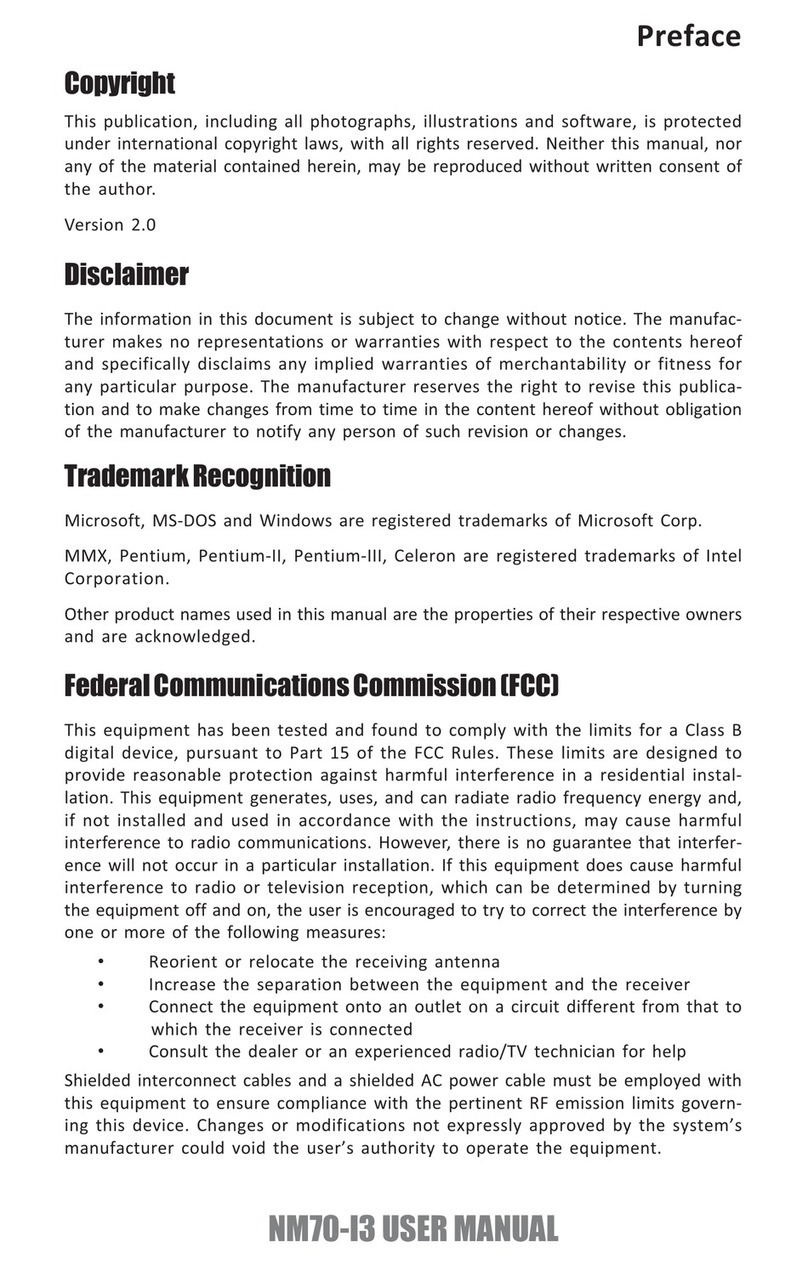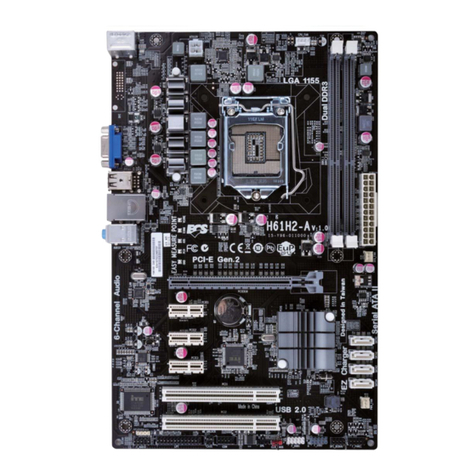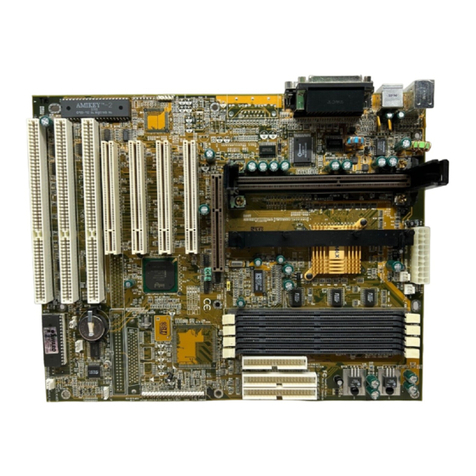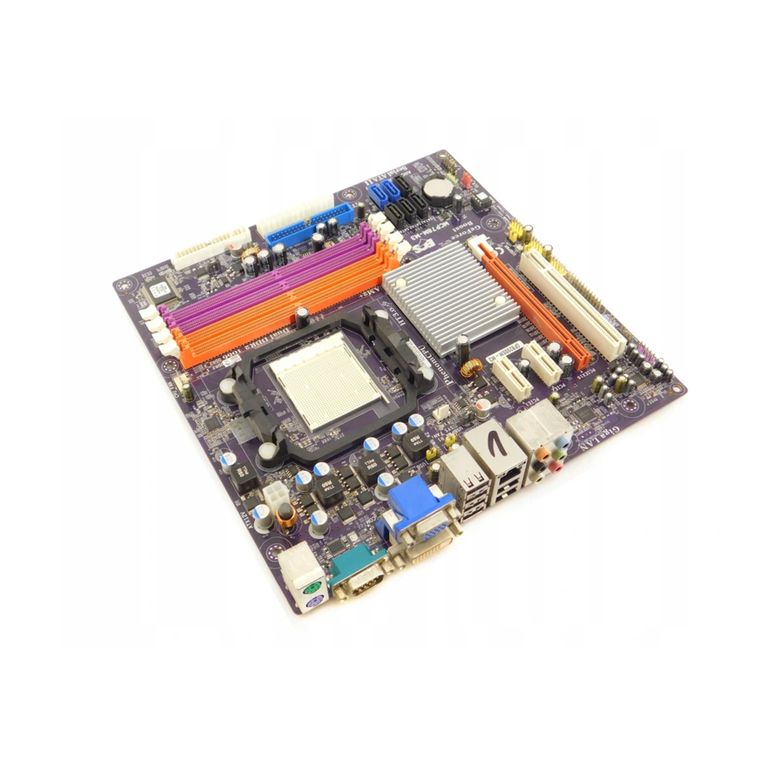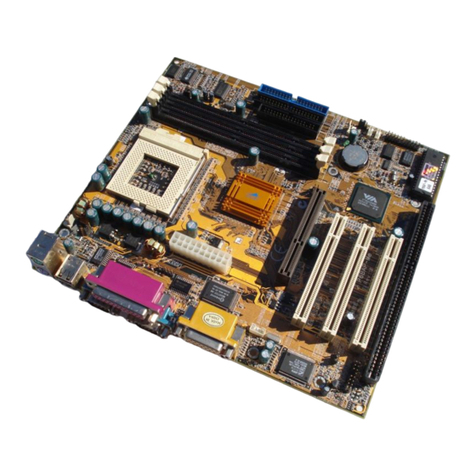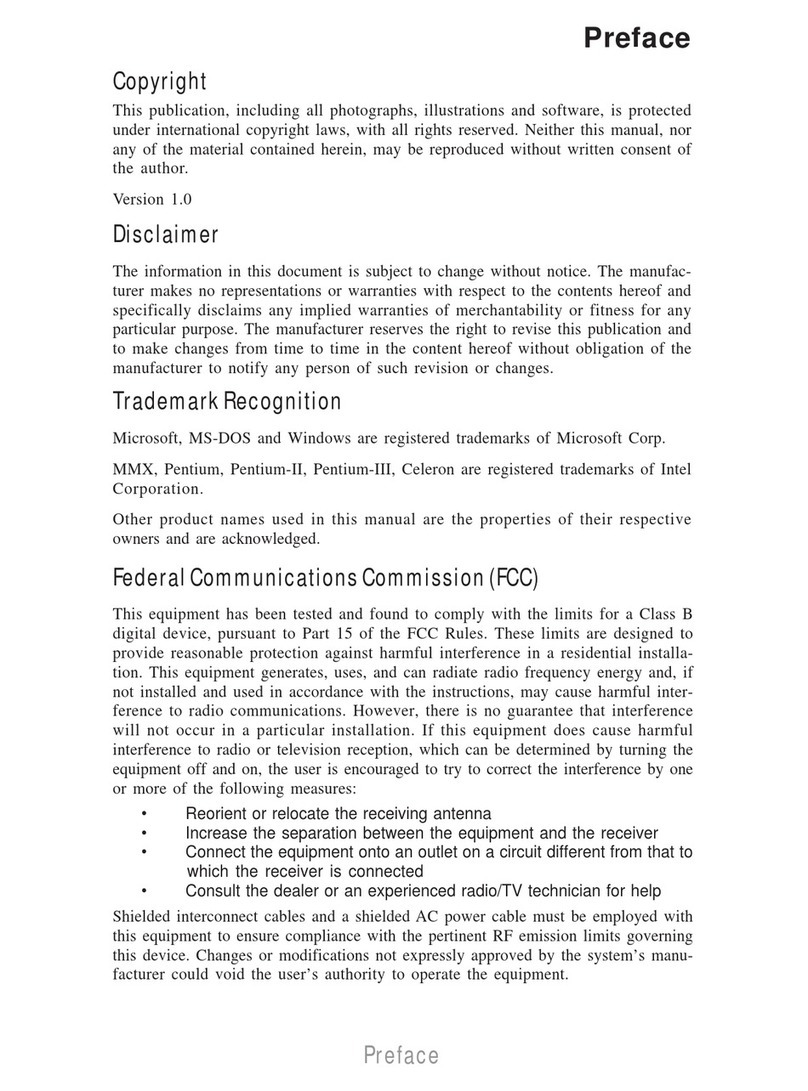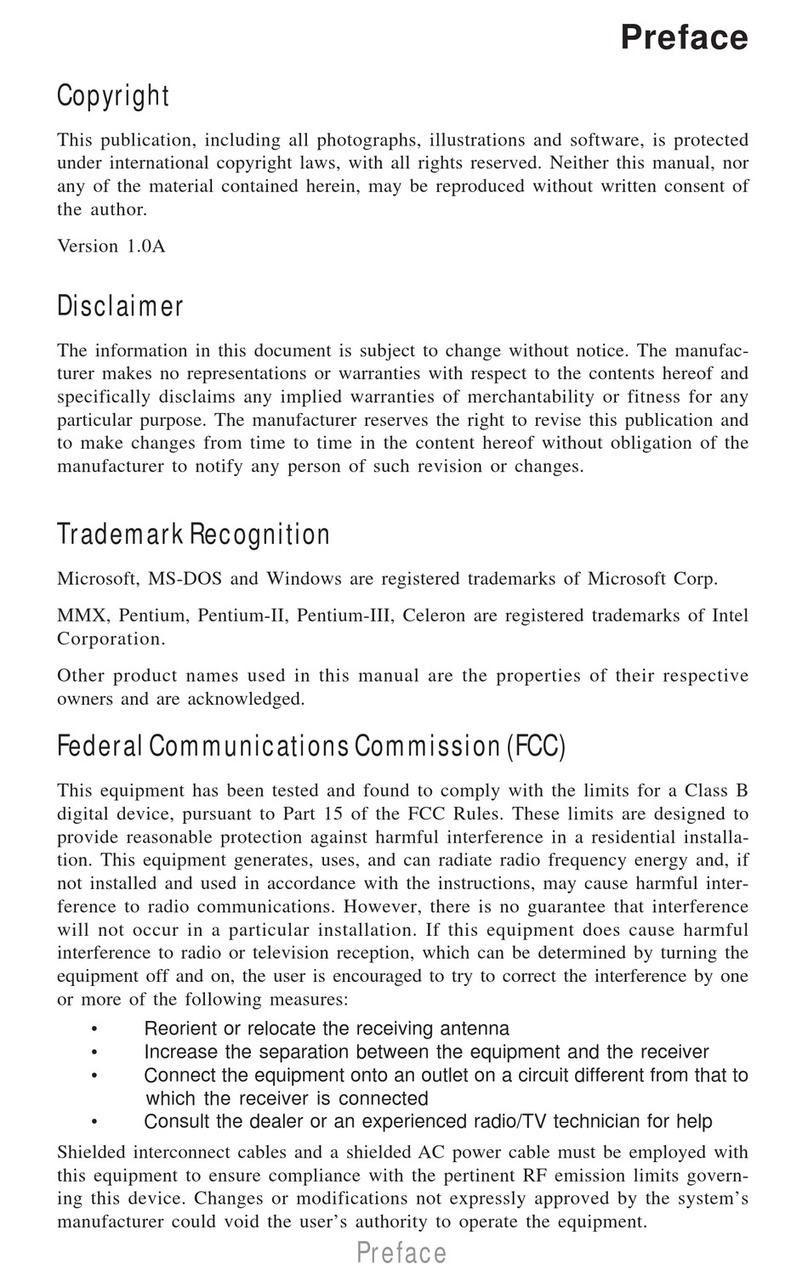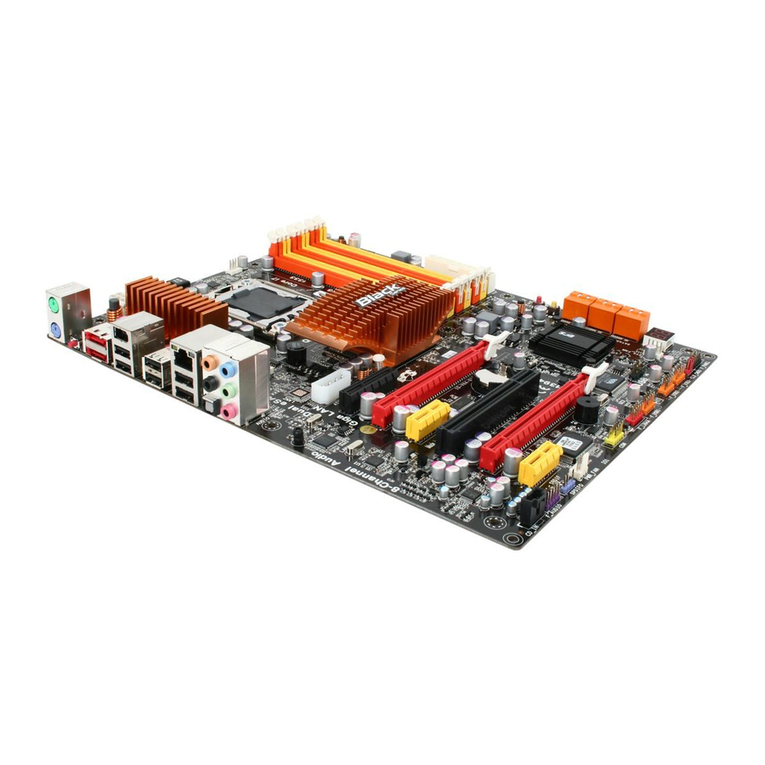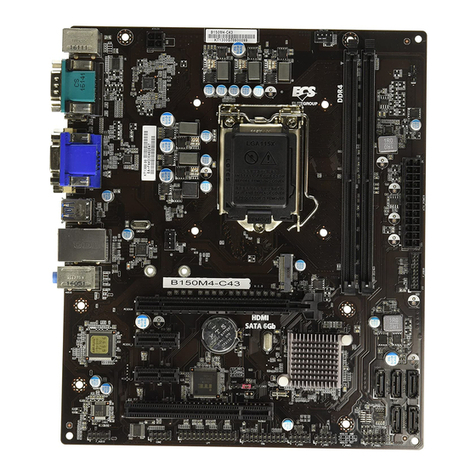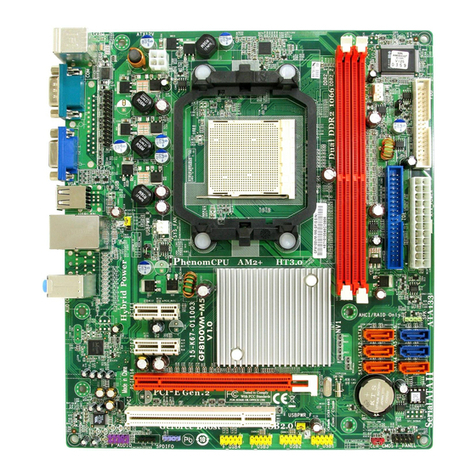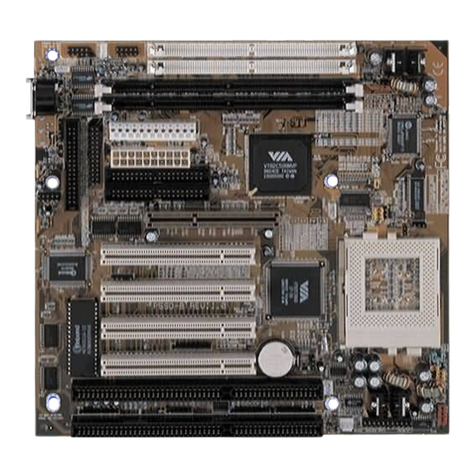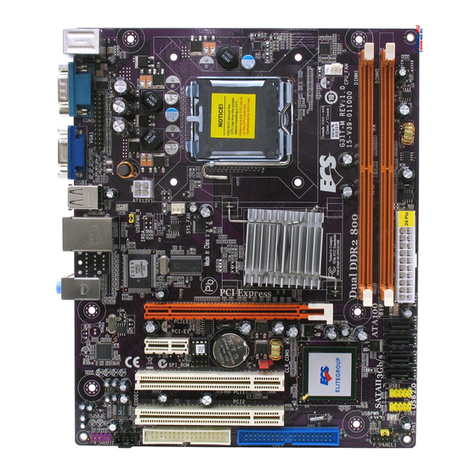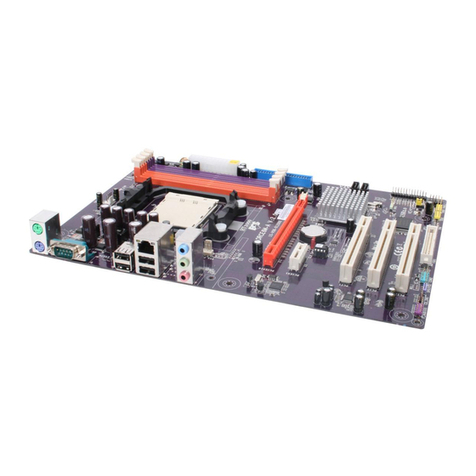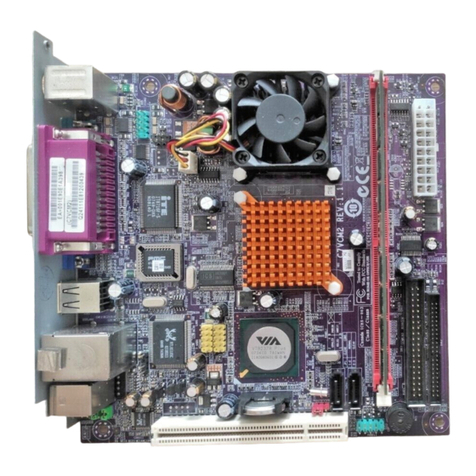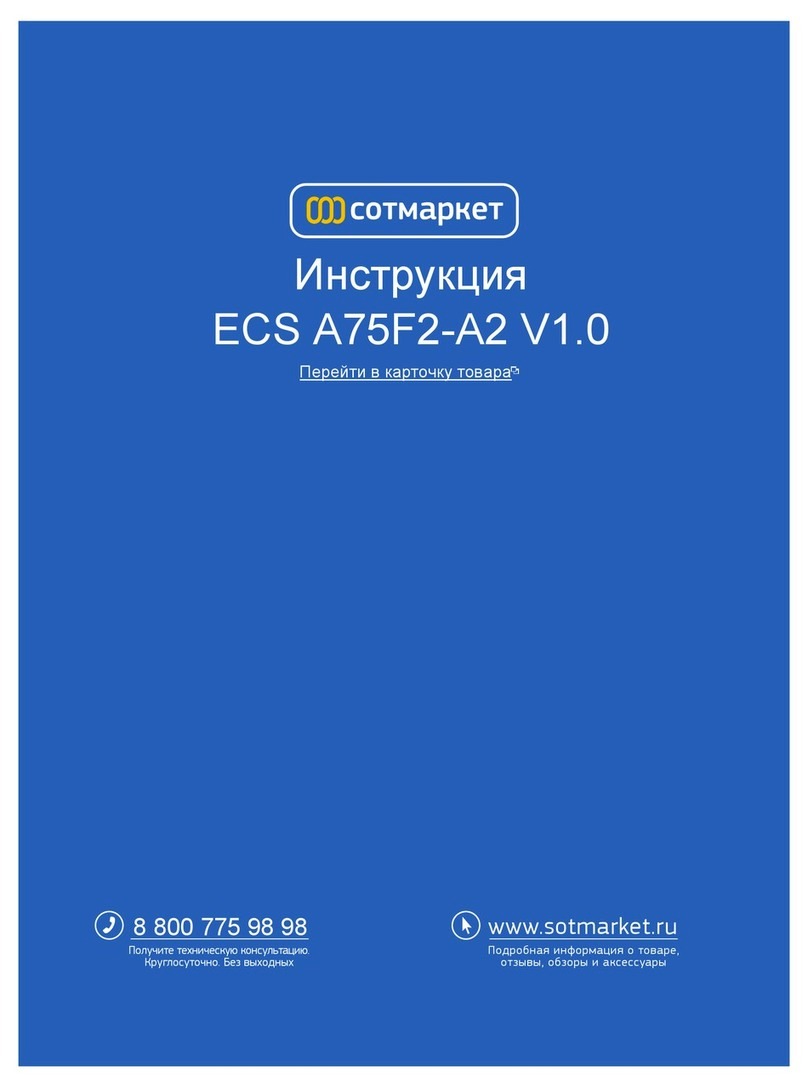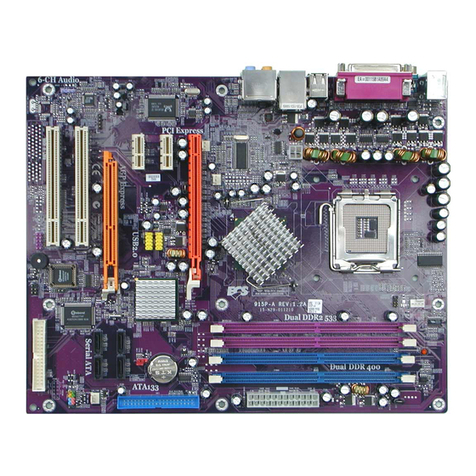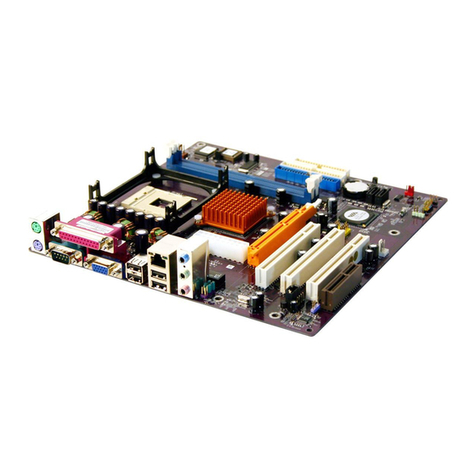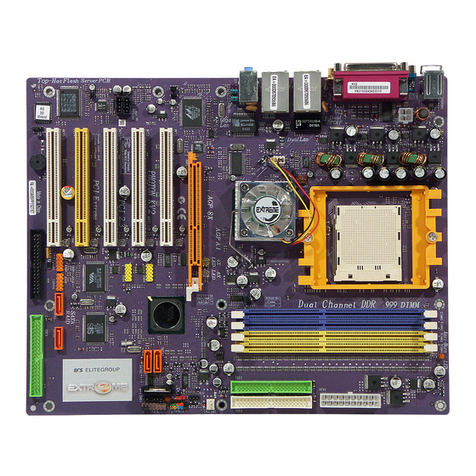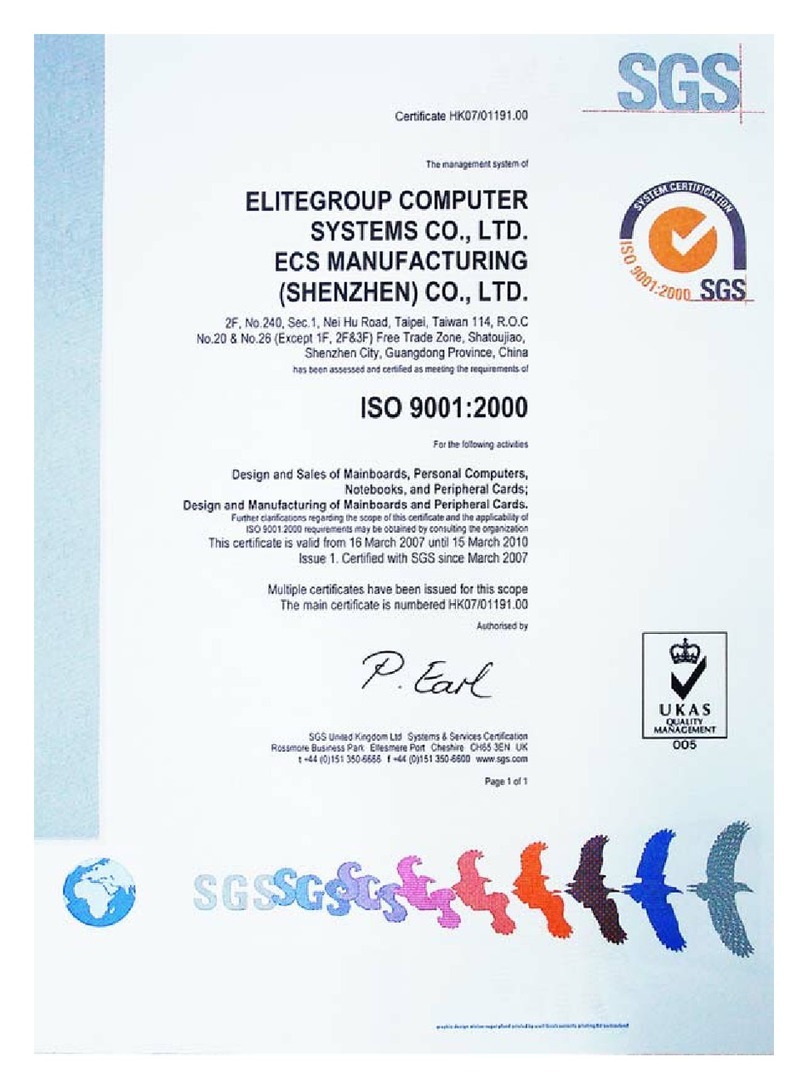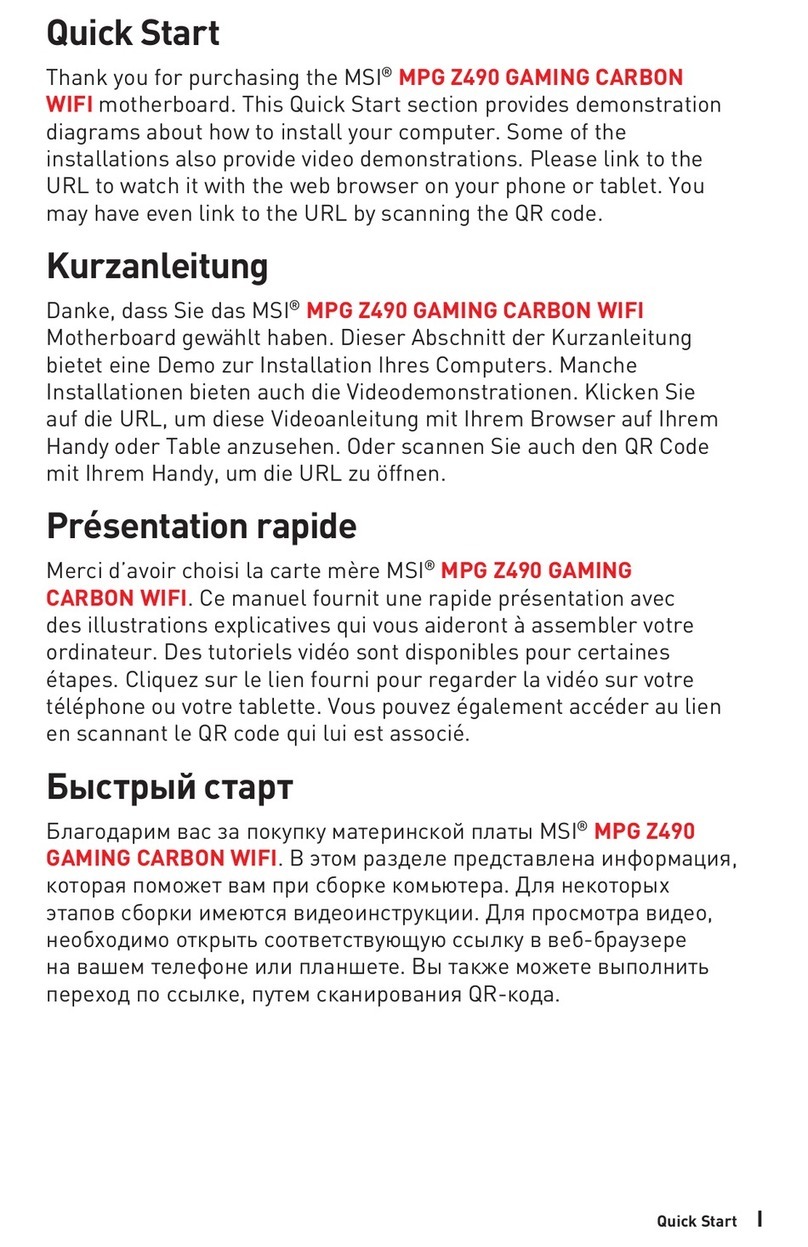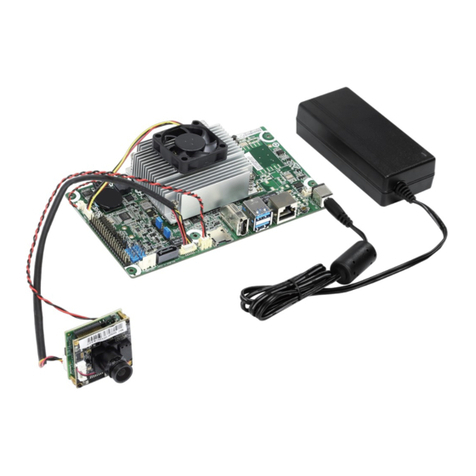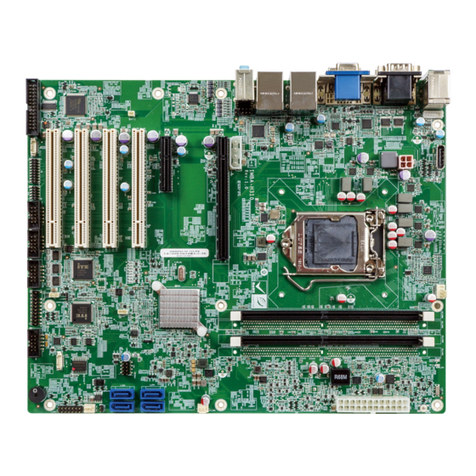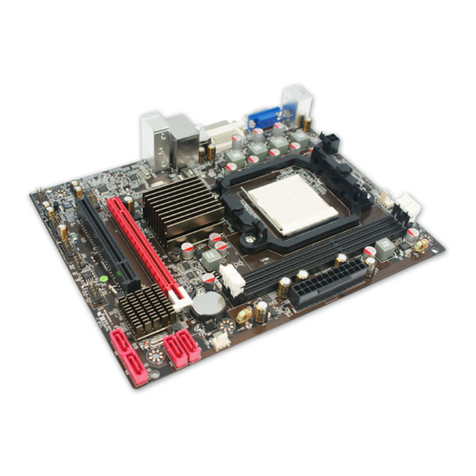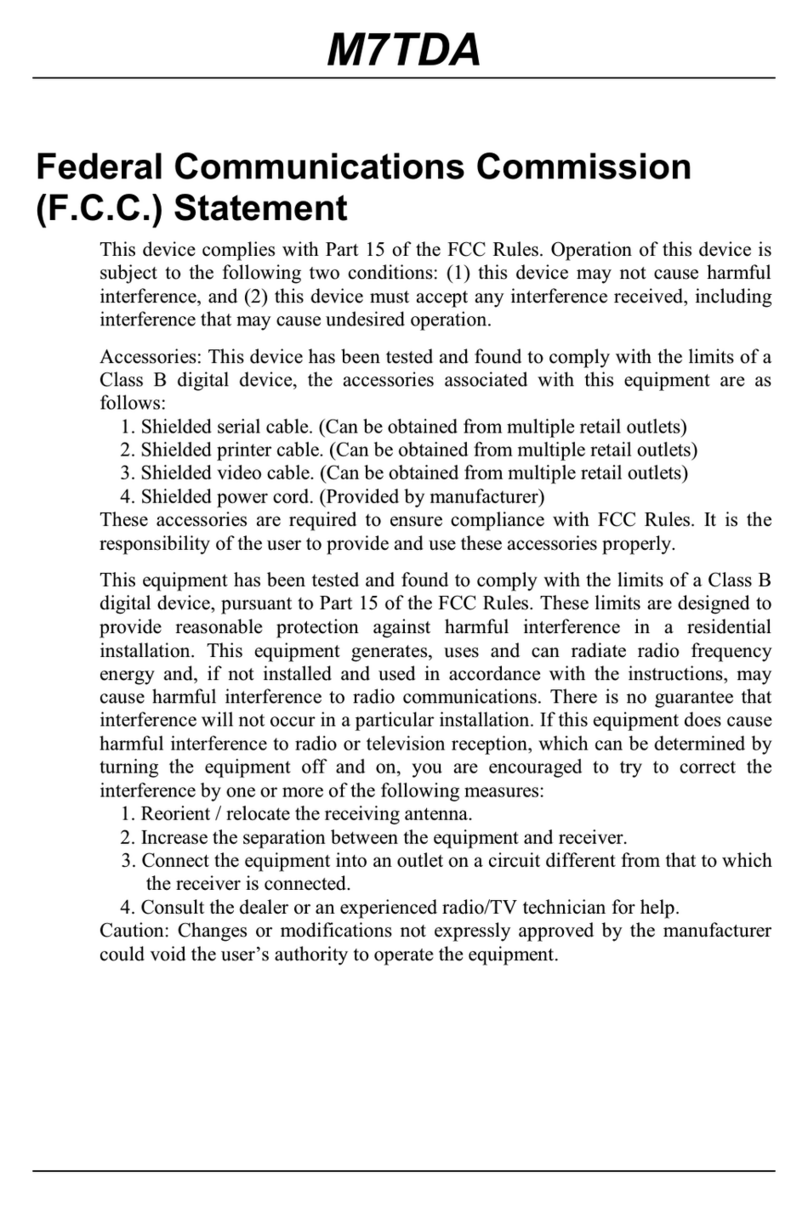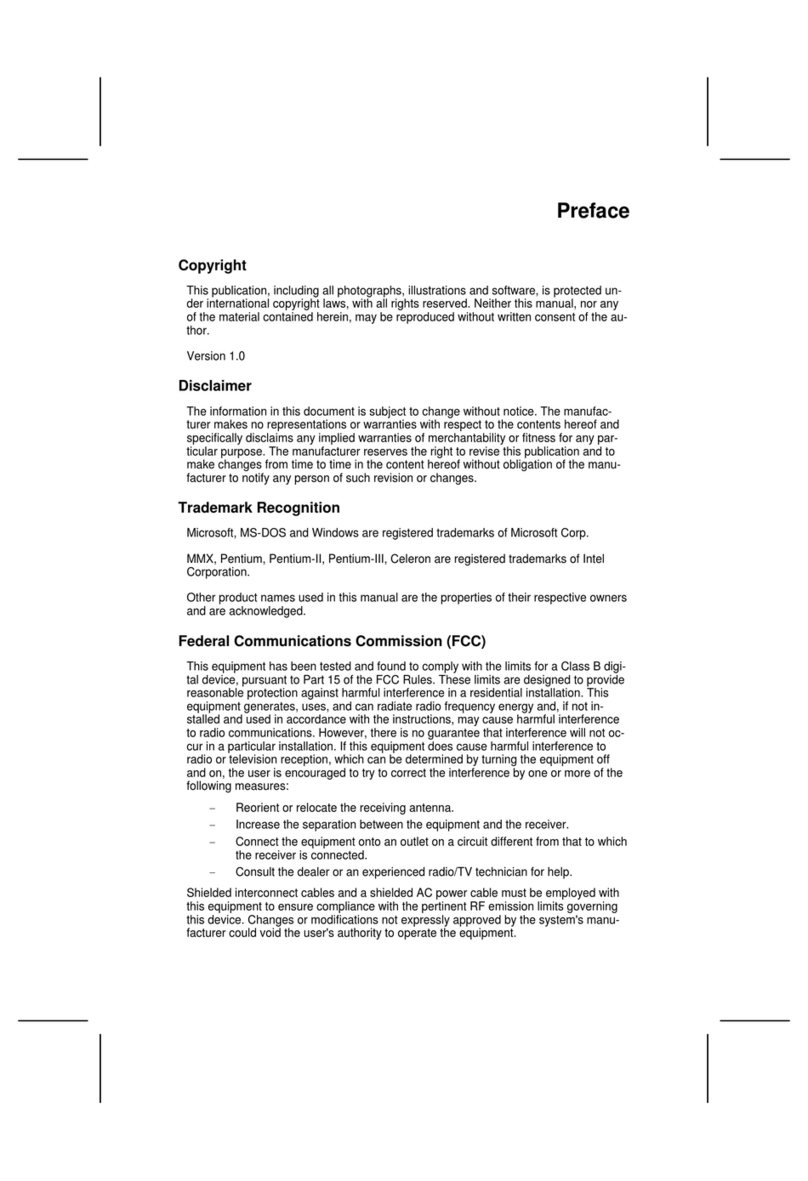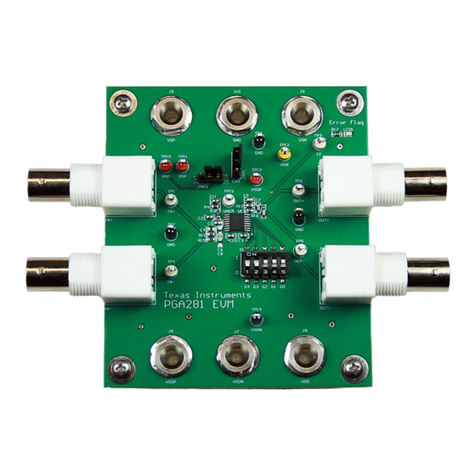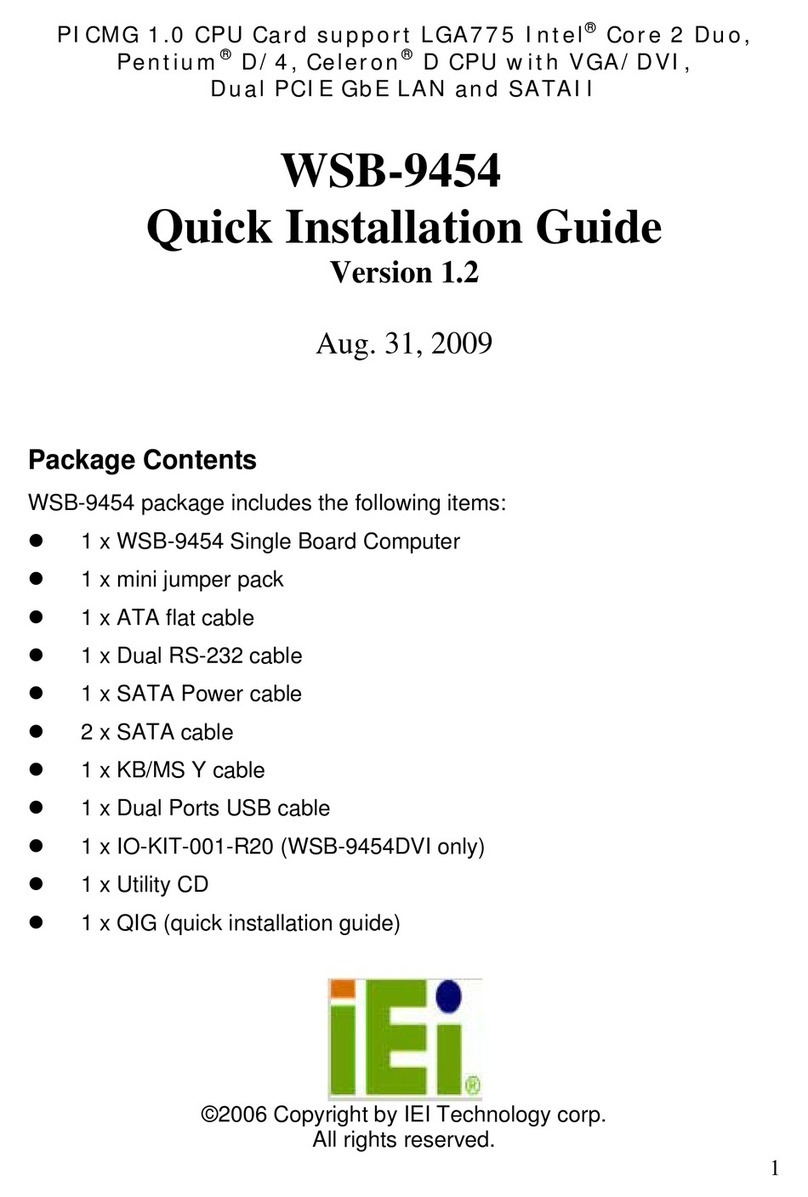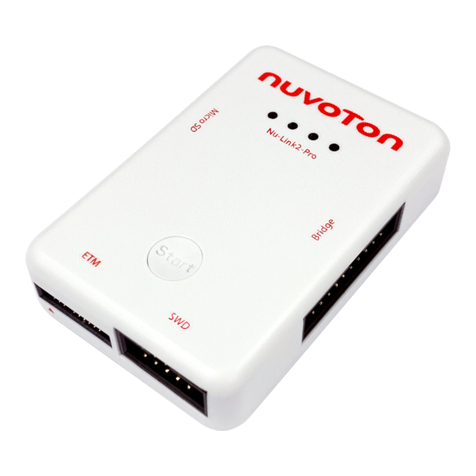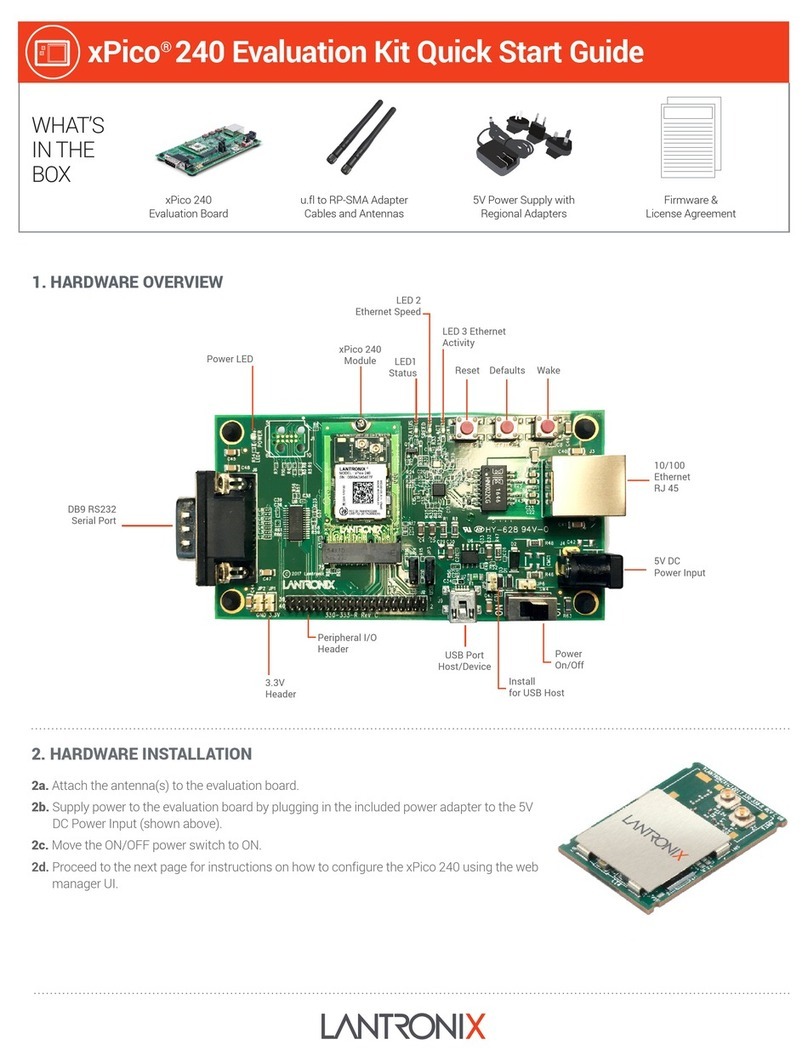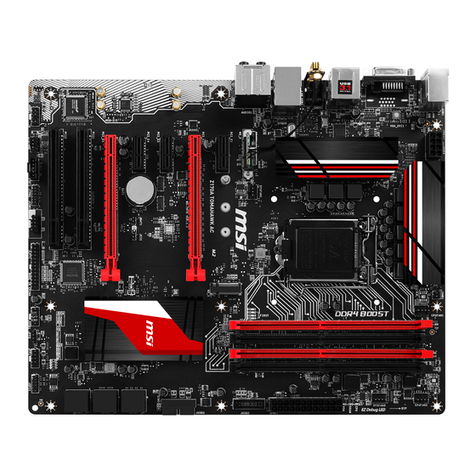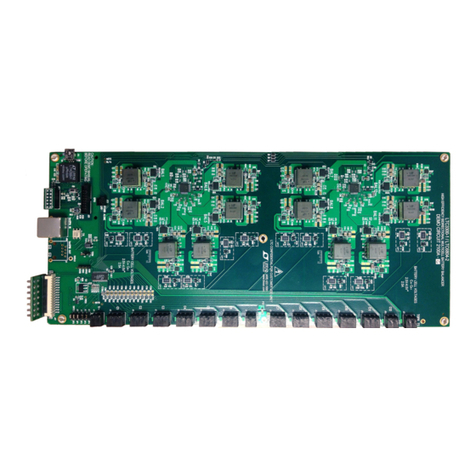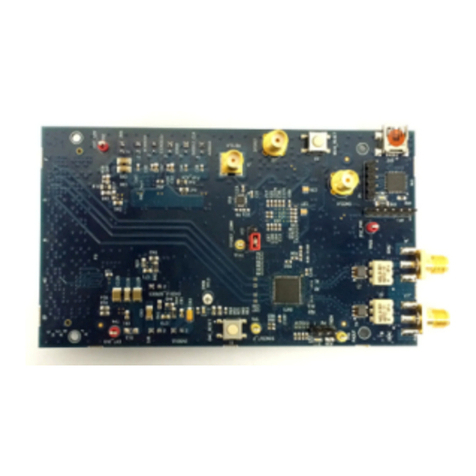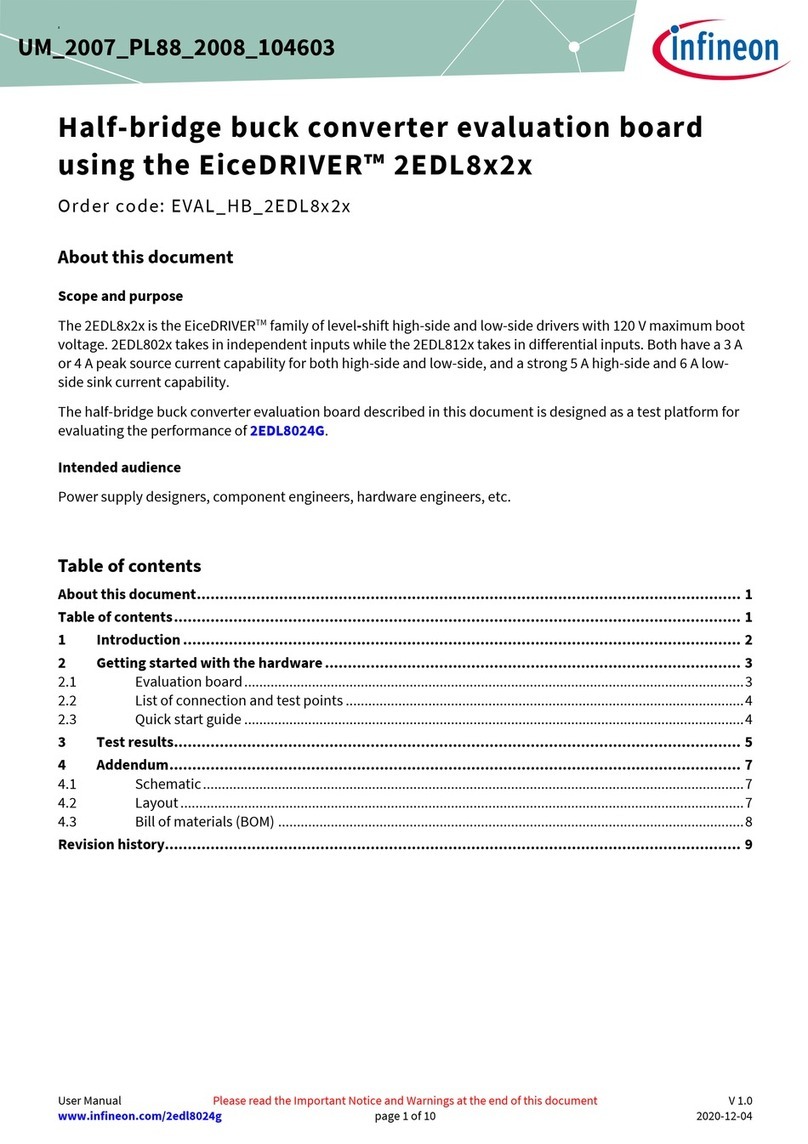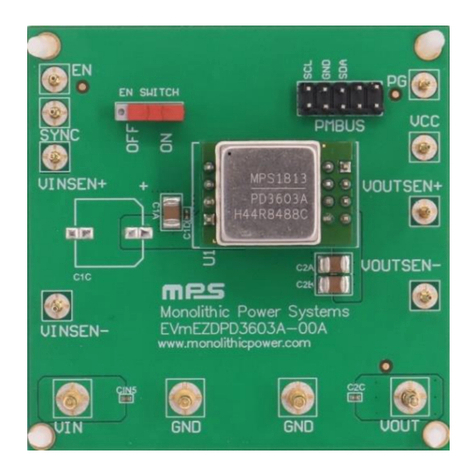ECS L4IBMGL3 1.0 User manual

i
Preface
Copyright
This publication, including all photographs, illustrations and software, is protected un-
der international copyright laws, with all rights reserved. Neither this manual, nor any
of the material contained herein, may be reproduced without writtenconsent ofthe au-
thor.
Version 1.0
Disclaimer
The information in this document is subject to change without notice. The manufac-
turer makes no representations or warranties with respect to the contents hereof and
specifically disclaims any implied warranties of merchantability or fitness for any par-
ticular purpose. The manufacturer reserves the right to revise this publication
and to make changes from time to time in the content hereof without obligation of the
manufacturer to notify any person of such revision or changes.
Trademark Recognition
Microsoft, MS-DOS and Windows are registered trademarks of Microsoft Corp.
MMX, Pentium, Pentium-II, Pentium-III, Celeron are registered trademarks of Intel
Corporation.
Other product names used in this manual are the properties of their respective owners
and are acknowledged.
Federal Communications Commission (FCC)
This equipment has been tested and found to comply with the limits for a Class B digi-
tal device, pursuant to Part 15 of the FCC Rules. These limits are designed to provide
reasonable protection against harmful interference in a residential installation. This
equipment generates, uses, and can radiate radio frequency energy and, if not in-
stalled and used in accordance with the instructions, may cause harmful interference
to radio communications. However, there is no guarantee that interference will not oc-
cur in a particular installation. If this equipment does cause harmful interference to
radio or television reception, which can be determined by turning the equipment off
and on, the user is encouraged to try to correct the interference by one or more of the
following measures:
−Reorient or relocate the receiving antenna.
−Increase the separation between the equipment and the receiver.
−Connect the equipment onto an outlet on a circuit different from that to which
the receiver is connected.
−Consult the dealer or an experienced radio/TV technician for help.
Shielded interconnect cables and a shielded AC power cable must be employed with
this equipment to ensure compliance with the pertinent RF emission limits governing
this device. Changes or modifications not expressly approved by the system's manu-
facturer could void the user's authority to operate the equipment.

ii
Declaration of Conformity
This device complies with part 15 of the FCC rules. Operation is subject to the follow-
ing conditions:
−This device may not cause harmful interference, and
−This device must accept any interference received, including interference
that may cause undesired operation.
Canadian Department of Communications
This class B digital apparatus meets all requirements of the Canadian Interference-
causing Equipment Regulations.
Cet appareil numérique de la classe B respecte toutes les exigences du Réglement
sur le matériel brouilieur du Canada.
About the Manual
The manual consists of the following:
Chapter 1
Introducing the Mainboard Describes features of the mainboard,
and provides a shipping checklist.
Go to ⇒page 1
Chapter 2
Installing the Mainboard Describes installation of mainboard
components.
Go to ⇒page 6
Chapter 3
Using BIOS Provides information on using the BIOS
Setup Utility.
Go to ⇒page 26
Chapter 4
Using the Mainboard Software Describes the mainboard software.
Go to ⇒page 47

iii
T
TA
AB
BL
LE
E
O
OF
F
C
CO
ON
NT
TE
EN
NT
TS
S
Preface i
Features and Packing List Translations 錯誤! 尚未定義書籤。
CHAPTER 1 1
Introducing the Mainboard 1
Introduction............................................................................................................1
Checklist.................................................................................................................1
Standard Items...................................................................................................1
Features..................................................................................................................2
Choosing a Computer Case................................................................................3
Mainboard Components.......................................................................................4
CHAPTER 2 6
Installing the Mainboard 6
Safety Precautions................................................................................................6
Quick Guide...........................................................................................................6
Installing the Mainboard in a Case.....................................................................7
Checking Jumper Settings...................................................................................7
Setting Jumpers.................................................................................................7
Checking Jumper Settings .................................................................................8
Jumper Settings .................................................................................................8
Connecting Case Components.........................................................................11
Front Panel Connector.....................................................................................13
Installing Hardware.............................................................................................14
Installing the Processor ...................................................................................14
Installing Memory Modules............................................................................17
Installing a Hard Disk Drive/CD-ROM..........................................................18
Installing a Floppy Diskette Drive..................................................................19
InstallingAdd-on Cards...................................................................................20
Connecting Optional Devices..........................................................................22
ConnectingI/ODevices.....................................................................................24
External Connector Color Coding...................................................................25
CHAPTER 3 26
Using BIOS 26
About the Setup Utility........................................................................................26
The Standard Configuration............................................................................26
Entering the Setup Utility................................................................................27
Updating the BIOS..........................................................................................27
Using BIOS..........................................................................................................28
Standard CMOS Features................................................................................29
Advanced BIOS Features ................................................................................31

iv
Advanced Chipset Features.............................................................................33
Integrated Peripherals......................................................................................35
Power Management Setup...............................................................................39
PNP/PCI Configurations.................................................................................42
PC Health Status..............................................................................................43
Frequency/Voltage Control..............................................................................44
Load Fail-Safe Defaults Option......................................................................45
Load Optimized Defaults Option....................................................................45
Set Supervisor/User Password.........................................................................45
Save & Exit Setup Option...............................................................................46
Exit Without Saving........................................................................................46
CHAPTER 4 47
Using the Mainboard Software 47
About the Software CD-ROM............................................................................47
Auto-installing under Windows 98....................................................................47
Running Setup.................................................................................................48
Manual Installation..............................................................................................49
Utility Software Reference.................................................................................50

1
C
Ch
ha
ap
pt
te
er
r
1
1
Introducing the Mainboard
I
In
nt
tr
ro
od
du
uc
ct
ti
io
on
n
Thank you for choosing this mainboard. This mainboard is a Micro-ATX main-
board that uses a 4-layer printed circuit board and measures 244 mm x 244
mm. The mainboard is design to support the mPGA Socket 478 Intel P4 Wil-
lamette/Northwood processors and the new Intel 845G (or 845GL) chipset.
With system bus speeds up to 400/533MHz, this mainboard represents the
most powerful desktop and cost-effective integrated solution available today.
The mainboard incorporates the 845-G (or 845-GL) (GMCH) and 82801DB
(ICH4) chipsets which combines advanced full set of I/O ports, such as dual
channel IDE interfaces, a floppy controller, a high-speed serial port, a VGA
port, an EPP/ECP capable bi-directional parallel port connector, four USB
(Universal Serial Bus) connector, a PS/2 keyboard and mouse connectors.
One AGP slot, three PCI local bus slots and one communication and network-
ing riser (CNR) slot provide expandability for add-on peripheral cards.
C
Ch
he
ec
ck
kl
li
is
st
t
Compare the mainboard’s package contents with the following checklist:
Standard Items
•One mainboard
•One diskette drive ribbon cable
•One IDE drive ribbon cable
•One auto-install software support CD
•Retention module
•This user’s manual
Notice to user:
This manual is provided to accommodate the L4IBMG3 and L4IBMGL3 mainboards. To
identify the type of mainboard you have, please refer below:
•L4IBMG3 mainboard incorporates the Intel 845-G (GMCH) and Intel
82801DB chipsets. It provides the 1.5V 4x AGP slot that can support up-
gradeable external AGP card or Intel ADD card.
•L4IBMGL3 mainboard incorporates the Intel 845-GL (GMCH) and Intel
82801DB chipsets. It provides a 1.5V 4x AGP slot which can only support In-
tel ADD card.

2
F
Fe
ea
at
tu
ur
re
es
s
Processor The mainboard uses a micro PGA 478-pin socket that has the
following features:
•Accommodates Intel/P4 Willamette/Northwood 478-pins
CPU
•For L4IBMG3 (845G) –Supports Intel 845G chipset with
400/533MHz front side bus (FSB) and data bandwidths
up to 4.2 GB/s.
•For L4IBMGL3 (845GL) –Supports Intel 845GL with
400MHz front side bus (FSB) and data bandwidths up to
3.2 GB/s.
Chipset Intel’s innovative 845G/845GL (GMCH) and 82801DB (ICH4)
chipsets are based on an innovative and scalable architecture
with proven reliability and performance. A few of the advanced
features of the chipsets are:
•Host interface controller supports 400/533 MHz front side
(system) bus frequency
•Supports system bus Dynamic Bus Inversion (DBI).
•Supports 133 MHz SDR SDRAM or 266 MHz DDR
SDRAM devices
•AGTL+ Host Bus with Integrated Termination supporting
32-Bits host addressing
•Supports AGP 2.0 including 1X/2X/4X AGP data transfers
and 2X/4X Fast Write Protocol (*845GL chipset does not
support external AGP but ADD card only)
•Supports 3D / 2D graphic
•Supports up to 2 double-sided DIMM (4 device rows)
•PCI Rev. 2.2, 3.3V (5V Tolerant), 33 MHz interface com-
pliant and PCI to System Memory Data Streaming up to
132 MB/sec
•Upstream Hub Interface for access to the Intel GMCH.
•2 Channel Ultra ATA/100 Bus Master IDE Controllers
•Supports six USB 2.0 ports for serial transfers at
480Mbits/sec
Additional key features include support for an AC 97 link for audio
and modem, hardware monitoring, and ACPI/OnNow power man-
agement.
Memory The mainboard can accommodate 2.5V DDR SDRAM. It ac-
commodates three unbuffered 2.5V 184 pin slots with a total
maximum capacity of 2 GB.
AC’ 97 Audio
Codec The AC’ 97 Audio codec is compliant with the AC’ 97 2.2
specification, and supports 18-bit ADC (Analog Digital Con-
verter) and DAC (Digital Analog Converter) resolution as well
as 18-bit stereo full-duplex codec with independent and vari-
able sampling rates.
Expansion
Options The mainboard comes with the following expansion options:
•Three 32-bit PCI slots
•One 4xAGP slot (support 1.5V only)
•Two IDE connectors which support four IDE channels and
a floppy disk drive interface
•One onboard LAN (optional) chip and LAN port on top of
the USB port

3
the USB port
The mainboard supports Ultra DMA bus mastering with trans-
fer rates of 33/66/100 MB/sec.
Integrated I/O The mainboard has a full set of I/O ports and connectors:
•Two PS/2 ports for mouse and keyboard
•One serial port
•One VGA port
•One parallel port
•Four USB ports
•One LAN port (optional)
•Audio jacks for microphone, line-in and line-out
Onboard LAN
(optional) The Realtek RTL8100B is incorporated in the chipset providing
the mainboard with integrated Ethernet PCI LAN capabilities.
BIOS
Firmware This mainboard uses Award BIOS that enables users to con-
figure many system features including the following:
•Power management
•Wake-up alarms
•CPU parameters and memory timing
•CPU and memory timing
The firmware can also be used to set parameters for different
processor clock speeds.
C
Ch
ho
oo
os
si
in
ng
g
a
a
C
Co
om
mp
pu
ut
te
er
r
C
Ca
as
se
e
There are many types of computer cases on the market. The mainboard com-
plies with the specifications for the Micro-ATX system case. Some features on
the mainboard are implemented by cabling connectors on the mainboard to
indicators and switches on the system case. Ensure that your case supports
all the features required. The mainboard can support one or two floppy disk-
ette drives and four enhanced IDE drives. Ensure that your case has sufficient
power and space for all the drives that you intend to install.
Most cases have a choice of I/O templates in the rear panel. Make sure that
the I/O template in the case matches the I/O ports installed on the rear edge
of the mainboard.
This mainboard has a Micro-ATX form factor of244 mm x 244 mm. Choose a
case that accommodates this form factor.

4
M
Ma
ai
in
nb
bo
oa
ar
rd
d
C
Co
om
mp
po
on
ne
en
nt
ts
s

5
Table of Mainboard Components
Label Component
AGP1 Accelerated Graphics Port
ATX12V Power connector
ATX1 Standard 20-pin ATX power connector
AUDIO1 Front panel MIC/Speaker Out header
BT1 Three volt realtime clock battery
CDIN1 Primary CD-in connector
CDIN2 Secondary CD-in connector
CASFAN1 Case fan connector
CNR1 Communications and Networking Riser slot
CPUFAN1 Cooling fan for CPU
CPU Socket CPU socket (mPGA478)
DIMM1 ~ DIMM2 Two 184-pin DDR sockets
FDD1 Floppy disk drive connector
IDE1 Primary IDE channel
IDE2 Secondary IDE channel
IR1 Infrared cable header
JP3 BIOS flash protect jumper
JP1 Clear CMOS jumper
JP4 Select onboard LAN
LED1 LED status indicator connector
USB2 Connector for front panel USB ports
PANEL1 Panel connector for case switches and LEDs
PCI1 ~ PCI3 Three 32-bit add-on card slots
PWRFAN1 Power fan connector
SPEAKER1 Speaker connector
VID4-VID0 Core voltage selector jumpers (for manufacturing test
only)
WOL1 Wake On LAN wakeup connector
WOM1 Wake On Ring wakeup connector
Note: LED1 is usually connected to a light that indicates that the computer is
powered on. Do not install hardware or disconnect power cables while the
LED is on.
This concludes Chapter 1. The next chapter explains how to install the main-
board.

6
C
Ch
ha
ap
pt
te
er
r
2
2
Installing the Mainboard
S
Sa
af
fe
et
ty
y
P
Pr
re
ec
ca
au
ut
ti
io
on
ns
s
Follow these safety precautions when installing the mainboard:
•Wear a grounding strap attached to a grounded device to avoid
damage from static electricity.
•Discharge static electricity by touching the metal case of a safely
grounded object before working on the mainboard.
•Leave components in the static-proof bags they came in.
•Hold all circuit boards by the edges. Do not bend circuit boards.
Q
Qu
ui
ic
ck
k
G
Gu
ui
id
de
e
This Quick Guide suggests the steps you can take to assemble your system
with the mainboards.
The following table provides a reference for installing specific components:
Locating Mainboard Components Go to page 4
Installing the Mainboard in a Case Go to page 7
Setting Jumpers Go to page 7
Installing Case Components Go to page 11
Installing the CPU Go to page 14
Installing Memory Go to page 17
Installing an HDD and CD-ROM Drive Go to page 17
Installing an FDD Go to page 19
Installing Add-on Cards Go to page 20
Connecting Options Go to page 22
Connecting Peripheral (I/O) Devices Go to page 24

7
I
In
ns
st
ta
al
ll
li
in
ng
g
t
th
he
e
M
Ma
ai
in
nb
bo
oa
ar
rd
d
i
in
n
a
a
C
Ca
as
se
e
Refer to the following illustration and instructions for installing the mainboard
in a case:
This illustration shows an ex-
ample of a mainboard being
installed in a tower-type case:
Note: Do not overtighten
the screws as this
can stress the main-
board.
Most system cases have
mounting brackets installed in
the case, which correspond to
the holes in the mainboard.
Place the mainboard over the
mounting brackets and secure
the mainboard onto the mount-
ing brackets with screws.
2. Secure the mainboard with
screwswhereappropriate.
1. Place the mainboard
over the mounting brackets.
Ensure that your case has an I/O template that supports the I/O ports and
expansion slots on your mainboard.
C
Ch
he
ec
ck
ki
in
ng
g
J
Ju
um
mp
pe
er
r
S
Se
et
tt
ti
in
ng
gs
s
This section explains how to set jumpers for correct configuration of the main-
board.
Setting Jumpers
Use the mainboard jumpers to set system configuration options. Jumpers with
more than one pin are numbered. When setting the jumpers, ensure that the
jumper caps are placed on the correct pins.
The illustrations below show a 2-pin jumper.
When the jumper cap is placed on both pins,
the jumper is SHORT. If you remove the
jumper cap, or place the jumper cap on just
one pin, the jumper is OPEN.
This illustration shows a 3-pin
jumper. Pins 1 and 2 are SHORT.
Short Open
12
3

8
Checking Jumper Settings
The following illustration shows the location of the mainboard jumpers. Pin 1 is
labeled.
Jumper Settings
Jumper Type Description
Setting
JP1 3-pin Clear CMOS 1-2: Normal (default)
2-3: Clear CMOS
JP1
1
JP3 2-pin BIOS Flash
Protect Open: Flash (Default)
Short: Flash Protect JP3
JP4 3-pin LAN Select
On Board 2-3: Disable
1-2: Enable JP4
1

9
VID4~VID0 12-pin
Core voltage
selector
jumper
See table for settings.
VID4 ~ VID0
1
JP1 –Enables you to clear the BIOS. Refer to the following in-
structions:
1. Turn the system off.
2. Remove all ATX power connectors (including ATX1 and
ATX12V).
3. Short pins 2 and 3 on JP1.
4. Return the jumper to the normal setting.
5. Plug in all ATX power connectors.
JP3 –Enables you to prevent the BIOS from being updated
(flashed). Open the jumper if you are going to update your
BIOS.After updating the BIOS, short the jumper to protect
the BIOS from being flashed.
JP4 –Use this jumper to enable or disable built-in LAN network
adapter.
VID4 ~ VID0 –Use this jumper to set the CPU voltage manually to im-
proved the CPU performance. However, do not change the
VID4~VID0 setting if you are not familiar with the CPU. This
may cause the system to become unstable or hang-up.
1
Open all pins = 1
1
Short pin 1and 2 = (auto by CPU default)
1
Short pin 2 and 3 = 0
VID4 VID3 VID2 VID1 VID0 VDAC
11111Off
111101.100
111011.125
111001.150

10
VID4 VID3 VID2 VID1 VID0 VDAC
110111.175
110101.200
110011.225
110001.250
101111.275
101101.300
101011.325
101001.350
100111.375
100101.400
100011.425
100001.450
011111.475
011101.500
011011.525
011001.550
010111.575
010101.600
010011.625
010001.650
001111.675
001101.700
001011.725
001001.750
000111.775
000101.800
000011.825
000001.850

11
C
Co
on
nn
ne
ec
ct
ti
in
ng
g
C
Ca
as
se
e
C
Co
om
mp
po
on
ne
en
nt
ts
s
After you have installed the mainboard into a case, you can begin connecting
the mainboard components. Refer to the following:
1. Connect the Pentium 4
processor auxiliary case
power supply connector
to ATX12V1.
2. Connect the standard
power supply connector
to ATX11.
3. Connect the CPU cool-
ing fan cable to
CPUFAN1.
4. Connect the auxiliary
power supply cooling fan
connector to PWRFAN1.
5. Connect the case cool-
ing fan connector to
either CASFAN1.
6. Connect the case
speaker cable to
SPEAKER1.
7. Connect the case
switches and indicator to
PANEL1.
Note:When the system is heavily loaded,
you should install, at a minimum, an
ATX12V power supply with a 300W
capacity.
ATX1: ATX 20-pin Power Connector
Pin Signal Name
Pin Signal Name
1+3.3V 11 +3.3V
2+3.3V 12 -12V
3Ground 13 Ground
4+5V 14 PS ON#
5Ground 15 Ground
6+5V 16 Ground
7Ground 17 Ground
8PWRGD 18 +5V
9+5VSB 19 +5V
10 +12V 20 +5V
1You can either use the 5V or 12V ATX power; the mainboard can work properly on both power supplies.

12
ATX12: ATX 12V Power Connector
Pin Signal Name
1+12V
2+12V
3Ground
4Ground
CPUFAN1/PWRFAN1/CASFAN1: FAN Power Connectors
Pin Signal Name Function
1GND System Ground
2+12V Power +12V
3Sense Sensor
SPEAKER1: Internal speaker
Pin Signal Name
1Signal
2Key
3Ground
4VCC
SJ1: Single color LED header
Pin Signal Name Function
1ACPI LED MSG LED (-) green
2ACPI LED MSG LED (-) green
3SB5V Power LED (+)
ACPI LED function:
S0 S1 S3 S4/S5
SJ1
1
Light Blinking Blinking Dark
LSJI: Single color LED header(for OEM customers only)
Pin Signal Name
15VSB
2SUSLED-Y
ACPI LED function:
S0 S1 S3 S4/S5
LSJ1
Dark Dark Light Dark

13
Front Panel Connector
The front panel connector (PANEL1) provides a standard set of switch and
LED connectors commonly found on ATX or micro-ATX cases. Refer to the
table below for information:
PANEL1
Pin
Signal Name
Function
1HD_LED_P Hard disk LED (positive)
2FP PWR/SLP MSG LED [dual color or single color (+)]
3HD_LED_N Hard disk active LED (negative)
4FP PWR/SLP MSG LED [dual color or single color (-)]
5RST_SW_N Reset Switch
6PWR_SW_P Power Switch
7RST_SW_P Reset Switch
8PWR_SW_N Power Switch
9RSVD Reserved
10
NC No pin
Hard Drive Activity LED
Connecting pins 1 and 3 to a front panel mounted LED provides visual indica-
tion that data is being read from or written to the hard drive. For the LED to
function properly, an IDE drive should be connected to the onboard IDE inter-
face. The LED will also show activity for devices connected to the SCSI (hard
drive activity LED) connector.
Power / Sleep / Message Waiting LED
Connecting pins 2 and 4 to a single-or dual-color, front panel mounted LED
provides power on/off, sleep, and message waiting indication.
Reset Switch
Supporting the reset function requires connecting pins 5 and 7 to a momen-
tary-contact switch that is normally open. When the switch is closed, the board
resets and runs POST.
Power Switch
Supporting the power on/off function requires connecting pins 6 and 8 to a
momentary-contact switch that is normally open. The switch should maintain
contact for at least 50 ms to signal the power supply to switch on or off. The
time requirement is due to internal debounce circuitry. After receiving a power
on/off signal, at least two seconds elapses before the power supply recog-
nizes another on/off signal.

14
I
In
ns
st
ta
al
ll
li
in
ng
g
H
Ha
ar
rd
dw
wa
ar
re
e
Installing the Processor
Caution: When installing a CPU heatsink and cooling fan make sure that
you DO NOT scratch the mainboard or any of thesurface-mount resistors
with the clip of the cooling fan. If the clip of the cooling fan scrapes
across the mainboard, you may cause serious damage to the mainboard
or its components.
On most mainboards, there are small surface-mount resistors near the
processor socket, which may be damaged if the cooling fan is carelessly
installed.
Avoid using cooling fans with sharp edges on the fan casing and the
clips. Also, install the cooling fan in a well-lit work area so that you can
clearly see the mainboard and processor socket.
Before installing the Processor
This mainboard automatically determines the CPU clock frequency and sys-
tem bus frequency for the processor. You may be able to change these
settings by making changes to jumpers on the mainboard, or changing the
settings in the system Setup Utility. We strongly recommend that you do not
overclock processors or other components to run faster than their rated speed.
Warning: Overclocking components can adversely affect the reliability of
the system and introduce errors into your system. Overclocking can per-
manently damage the mainboard by generating excess heat in
components that are run beyond the rated limits.
This mainboard has a mPGA478 socket. When choosing a processor, con-
sider the performance requirements of the system. Performance is based on
the processor design, the clock speed and system bus frequency of the proc-
essor, and the quantity of internal cache memory and external cache memory.

15
CPU Installation Procedure
The following illustrationshows the CPU installation components:
Note: The pin-1 corner is marked with an arrow
Follow these instructions to install the Retention Module and CPU:
1. Remove the existing retention module (if applicable).
2. Position the backplate
against the underside of
the mainboard; secure
the 4 screws firmly on
the retention module.
Note: Do not over tighten
the screws.
3. Install your CPU. Pull up
the lever away from the
socket and lift up to 90-
degree angle.

16
4. Locate the CPU cut
edge (the corner with the
pinhole noticeably miss-
ing). Align and insert the
CPU correctly.
5. Press the lever down.
6. Apply thermal grease on top of the CPU.
7. Put the CPU Fan down
on the retention module
and snap the four reten-
tion legs of the cooling
fan into place.
8. Flip the levers over to lock the heat sink in place.
9. Connect the CPU Cool-
ing Fan power cable to
the CPUFAN1 connec-
tor. This completes the
installation.
Note:CPU fan and heatsink installation procedures may vary with the type of
CPU fan/heatsink supplied. The form and size of fan/heatsink may also
vary.
Table of contents
Other ECS Motherboard manuals


